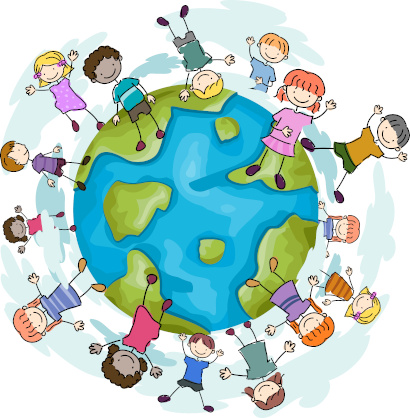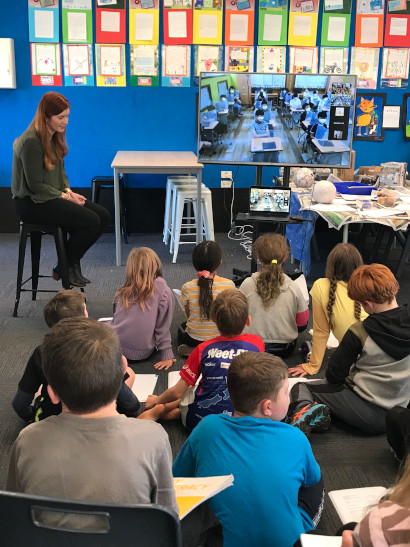Global connections foster curiosity to learn about, learn with and learn through cultures, languages, people and places within our local and global communities.
What are global connections?
Global connections encourage learners to build and maintain learning relationships with students, teachers, schools and experts from cultures and geographical contexts other than their own. By working together on shared learning experiences and learning opportunities, global connections serve as a powerful way to teach young people how to work collaboratively to resolve global challenges.
This tohu (icon) represents global connections. Building global connections values the diversity within our shared humanity.

The large blue triangle holds the collective relationship, while the small teal triangles represent the coming together of many people. The small yellow triangles represent the individual (rangatahi or young person) who is centred within this huge collective.
Why is it important to build global connections?
Building global connections nurtures an understanding and appreciation of diversity, inclusion, intercultural awareness, intercultural communication and intercultural learning. Through building global connections, learners are equipped with the skills, knowledge and understandings to effectively communicate and collaborate in culturally inclusive and responsive ways.

Relationships that centre around common purpose and authentic learning experiences teach learners how to consider the experiences, perspectives and world view of others when responding to global challenges. Global connections support young people to learn about, learn with and learn through cultures within their local and global communities.
Learning about culture teaches young people about cultural practices, customs, traditions, languages, geographical contexts and environments.
Learning with culture supports the development of intercultural awareness and understanding by supporting young people to collaborate in authentic and meaningful learning experiences.
Learning through culture encourages young people to participate in meaningful and shared cultural experiences to gain a deeper and nuanced understanding of cultural practices, world views and perspectives.
Building global connections within local community
Aotearoa New Zealand is a multicultural society with strong bicultural foundations, and this diversity is reflected in our school communities. This offers a valuable opportunity for schools, teachers and young people to learn from the rich cultural knowledge, skills and expertise held by families and cultural and ethnic groups within the school community.

Learning languages enables young people to understand the role that language plays in shaping our world. It also encourages learners to experience the integral relationship between language, culture and identity. Through learning languages, young people develop the ability to think in new ways, ask different kinds of questions and gain a deeper understanding of the local and global communities in which they live.
This clip showcases how learning languages is intentionally integrated throughout the school curriculum at Oropi School. Through an intercultural learning and teaching programme, students learn about culture and language while also challenging their own assumptions and bias.
Building global connections beyond Aotearoa
Building global connections also encourages learners to build connections beyond Aotearoa New Zealand. Our unique geographical positioning within the Asia-Pacific region gives learners the opportunity to build global connections within our geographical neighbourhood. This encourages young people to learn more about the countries, cultures and languages of the Asia-Pacific region. Building global connections within our geographical backyard helps learners to value the aspirations and values we have for our shared humanity while appreciating our social, cultural and geographical differences and specificities.

Building learner-to-learner relationships across countries is most effective when young people can collaborate on authentic projects that address similar issues and challenges within our own backyards (e.g. climate change, pandemic, natural disasters, Indigenous rights). By working together, young people can learn about each other’s cultural and geographical contexts as well as develop language and intercultural communication skills. This clip showcases how Oropi School integrates global connections throughout their school curriculum. While building global connections takes time, effort and creative timetabling, this clip highlights the transformational learning opportunities for young people.
